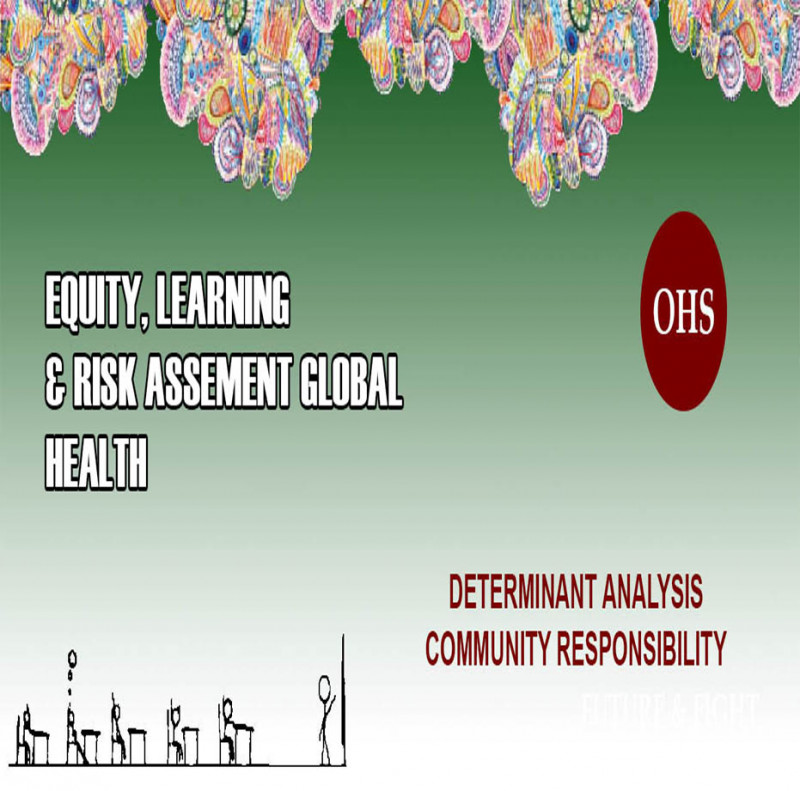The Role Of Microorganisms In Infection and Pandemics
- Administrator
- Senin, 14 November 2022 04:21
- 215 Lihat
- Rilis Berita

THE ROLE OF MICROORGANISMS IN INFECTION AND PANDEMICS
By: Dr. Dicky Budiman
Global Health and Safety Researcher
Ph.D. (Candidate) Griffith University
The primary objective of this introductory course is to provide an overview of the fundamental steps in the process of determining how microbes cause infectious diseases (i.e., bacteria, viruses, fungi, protozoa, and prions). Several diseases were selected as examples to illustrate the underlying mechanisms involved. In addition, this course will also elucidate and illustrate "highly dangerous and contagious microbes," which were chosen because the diseases caused by these pathogens can have disastrous impacts on health, such as epidemics or pandemics, and in turn will impact the economy, political, and social sectors, either nationally or globally.
Predicting which pathogens will present the highest global risk of a global catastrophe from a pandemic is arduous. Many approaches are retrospective and generally refer to the history of previous pandemics; however, this approach may fail to respond to new pathogenic (microbial) threats that do not have appropriate historical precedents. Referring to the experience of controlling the latest global outbreak, the COVID-19 pandemic, it is evident that the world needs a new paradigm for pandemic preparedness. This paradigm should be able to measure pandemic risk based on the real characteristics of certain classes of microorganisms and lead to specific recommendations for improving preparedness (pandemic preparedness).
It has become increasingly important to comprehend the broader pandemic threat landscape in light of recent global experience with catastrophic communicable disease epidemics. Most previous biothreat and pandemic preparedness activities have focused on list-based approaches based in part on past influenza pandemics, historical biological weapons development programs, or recent two-year outbreaks of emerging infectious diseases (e.g., SARS, MERS, and Ebola). However, such an approach inherently fails to account for agents who are currently unknown or those who lack historical precedent. As a result, relying solely on this method may compromise overall readiness and weaken global health resilience.
Pandemic Pathogen
When a pathogen reaches pandemic potential, it acquires a number of characteristics that set it apart from other microorganisms, which can only infect humans on a local or regional scale. These features can be broken down into a few groups: respiratory transmission, the ability to spread during the incubation period before symptoms appear, the absence of preexisting host immunity, and perhaps other intrinsic microbial qualities.
Microbe Transmission Methods
Microbial transmission has various routes, from blood and body fluids to vectors, fecal-oral, and respiratory (airborne and respiratory droplets). While any mode of transmission has the potential to cause a major outbreak if the human-to-human transmission is allowed to continue unabated, certain modes of transmission are more likely to be intervened in than others. For example, the transmission of infectious diseases caused by blood or body fluids can be stopped by infection control measures such as gloves or protective clothing.
Of the various modes of transmission, the respiratory route is the most likely mechanism for the spread of the pandemic. This is mainly since interventions to stop this method of spread are more difficult to implement when simple and universal respiratory measures can spread pathogens. This is evidenced by the worldwide spreading of influenza, pertussis, measles, and rhinoviruses (Herfst et al. 2017).
In contrast, while pathogens spread via the fecal-oral route, such as Vibrio cholera and the hepatitis A virus, can cause explosive outbreaks, even a small amount of sanitation infrastructure can put a stop to such outbreaks.
Vector-borne outbreaks are a special case of non-respiratory agent transmission. The geographical and climatologically delimited vector habitat limits the distribution of the majority of the agents that use this class of transmission. Humans can protect themselves against vectors, and they can change their habitat. These factors generally serve to limit the potential for vector-borne microbial pandemics.
Viruses transmitted by Anopheles and Aedes mosquitoes are an exception to this general rule regarding vector-borne pathogens. Given the geographical reach of this virus, which is transmitted by mosquitoes, its pandemic potential is greater. For instance, the majority of sub-Saharan Africa is hospitable to the malaria-transmitting Anopheles mosquito, while 75% of US states and 50% of the global population are regularly exposed to Aedes mosquitoes, which act as vectors for highly viremia flaviviruses. This is seen by the rapid spread of dengue, chikungunya, and Zika (Sinka et al. 2012; Centers for Disease Control and Prevention 2017).
The duration of the infectious phase and the time of the first infection can both play a significant role in the spread of infection. It is possible to reduce the spread of diseases that are contagious during the late stages of illness; when the infected individual is severely ill and has a lower likelihood of spreading. Conversely, diseases such as COVID-19 that are contagious before the onset of symptoms, during the incubation phase, or when only mild symptoms are present have a higher probability of spreading because affected individuals are able to go about their everyday activities with little to no interruption.
In fact, host population factors and characteristics of intrinsic microbial pathogenicity also cannot be separated from host characteristics, considering that disease is a complex interaction between the host's immune system and microbes (Pirofski and Casadevall 2008). Based on this paradigm, host features and microbial pathogenicity need to be discussed together.
Conclusion
To cause a pandemic with a high death toll, a significant proportion of the human population must be immunologically naive to the agent, allowing the microbe to infect many humans. Furthermore, the lack of sufficiently effective preventive measures (vaccines or antimicrobial agents) makes the spread easier to occur and the impact to be greater. Immunological responses occur in infections with previous pathogens (and hopefully also with new pathogens). Microbes, thus, must have the ability to evade host immune responses through virulence factors, immunological camouflage, or other features that allow productive infection to occur.